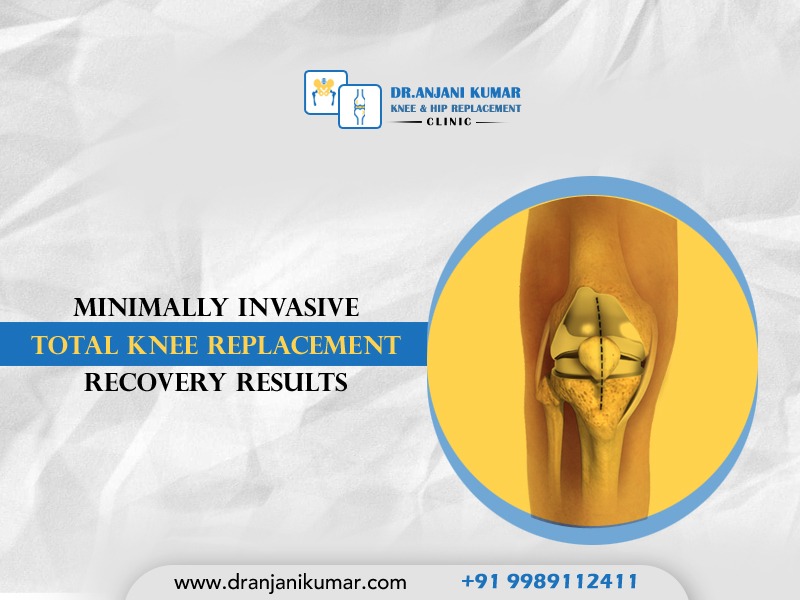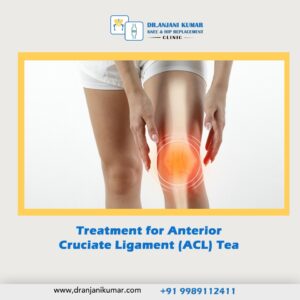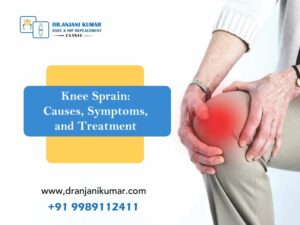Total knee replacement is a common orthopaedic procedure that replaces damaged or worn knee surfaces with implants or prostheses, reducing pain and increasing mobility. Traditional knee replacement involves a long vertical incision in the knee’s centre. In contrast, minimally invasive total knee replacement uses a shorter incision and less-invasive technique to expose the joint, reducing postoperative pain and speeding recovery. The goal is to provide a pain-free knee for daily activities and long-term use. Minimally invasive knee replacement uses a smaller incision and requires less cutting of tendons and ligaments, allowing for quicker recovery and a pain-free knee.
Minimally invasive knee replacement techniques, such as “quadriceps sparing”, “midvastus”, and “subvastus,” are less invasive and have shorter incisions compared to traditional knee replacements. These techniques avoid trauma to the quadriceps tendon and muscles in the front of the thigh, leading to less postoperative pain and reduced recovery time. Typical hospital stays after minimally invasive surgery range from one to four days, depending on the type of surgery. Physical rehabilitation is crucial for recovery, with specific exercises provided by the surgeon or therapist to increase the range of motion and restore strength.

Recovery results after a minimally invasive total knee replacement:
- Shorter hospital stay:
- Minimally invasive TKR often leads to a shorter hospital stay than traditional TKR.
- Many patients are discharged on the same day or within a day or two after surgery.
- Faster recovery:
- Due to reduced trauma to the surrounding tissues and muscles, patients who undergo minimally invasive TKR may experience a quicker initial recovery.
- They may be able to return to light activities and start physical therapy sooner.
- Reduced pain:
- Smaller incisions and less disruption to surrounding tissues can lead to less postoperative pain for many patients, improving overall comfort during recovery.
- Smaller scars:
- The smaller incisions used in minimally invasive TKR result in more minor scars, which can be less noticeable and may be less bothersome to some patients.

- The smaller incisions used in minimally invasive TKR result in more minor scars, which can be less noticeable and may be less bothersome to some patients.
- Quicker return to normal activities:
- Patients often experience a quicker return to normal activities and improved range of motion compared to traditional TKR.
- Lower risk of complications:
- Minimally invasive TKR is associated with a reduced risk of certain complications, such as blood loss, infection, and wound healing.
- Smaller incisions:
- One of the primary distinctions of minimally invasive TKR is using smaller incisions compared to traditional knee replacement surgery.
- In minimally invasive TKR, several smaller incisions (usually 3-4 inches) are made.
- Muscle-sparing techniques:
- Surgeons use techniques that involve less muscle dissection or trauma to the surrounding soft tissues.
- It can reduce pain and lead to a faster recovery.
- Specialised surgical instruments:
- Minimally invasive TKR may involve specialised instruments designed to work through smaller incisions and provide access to the joint.
- Navigation and robotics:
- Some minimally invasive TKR procedures incorporate computer navigation or robotic assistance to enhance the precision of implant placement.
- Reduced blood loss:
- Smaller incisions and less invasive techniques can reduce blood loss during surgery.
- Immediate postoperative period:
- In the initial days following surgery, you may experience pain and discomfort, but it is often less severe than with traditional TKR.
- Pain management strategies will be employed to help you manage this discomfort.
- Mobility:
- You will start moving your knee and walking with assistance, such as crutches or a walker, usually on the same day as the surgery.
- The smaller incisions and minimally invasive techniques often allow for quicker mobilisation.
- Physical therapy:
- Rehabilitation and physical therapy are crucial components of the recovery process.
- You will begin physical therapy early in your recovery, often within a day or two after surgery, to improve strength and mobility.
- Return to regular activity:
- The time it takes to return to normal activities can vary, but many patients can perform light activities and daily tasks within a few weeks to a few months.
- Full recovery, which includes regaining your entire range of motion and strength, may take several months.
- Follow-up appointments:
- Regular follow-up appointments with your orthopaedic surgeon are essential to monitor your progress and address any concerns or complications.
Recovery outcomes for minimally invasive knee joint replacement (TKR) can vary based on individual factors such as health, adherence to rehabilitation and physical therapy, and healing variations. Patients should follow their surgeon’s instructions and realistic expectations, as recovery can involve discomfort, temporary limitations, and ongoing physical therapy. Working closely with a healthcare team and actively participating in rehabilitation is crucial for the best
results, as minimally invasive TKR, can significantly improve knee function and quality of life.
Precautions to be followed post-surgery of minimally invasive total knee replacement:
The long-term success of a minimally invasive total knee replacement (TKR) relies heavily on its recovery. You must follow your orthopaedic surgeon’s and healthcare team’s recommendations to ensure safety and effectiveness.
- Medication management:
- Follow your prescribed medication schedule, which typically includes pain and any other medications your surgeon prescribes.
- Pain management is essential for your comfort and mobility during recovery.
- Mobility and weight-bearing:
- Adhere to your surgeon’s guidance regarding weight-bearing restrictions.
- Gradually, as directed by your surgeon and physical therapist, you will be allowed to put more weight on the knee.
- Physical therapy and rehabilitation:
- Attend all scheduled physical therapy sessions and follow the exercises and recommendations provided by your physical therapist.
- Consistent rehabilitation is essential for regaining strength, mobility, and function in your knee.
- Wound care:
- Keep the surgical incisions clean and dry to prevent infection.
- When it comes to wound care and dressing changes, you must follow your surgeon’s recommendations.
- Swelling and elevation:
- Swelling is joint after knee replacement surgery.
- When you sleep, elevating your leg can help it become less swollen.
- Your surgeon may recommend using ice or cold packs as well.
- Avoid high-impact activities:
- After minimally invasive TKR, avoiding high-impact activities, such as running or jumping, is essential as they can put excessive stress on the replaced joint.
- Monitor for signs of infection or complications:
- Pay close attention to the surgical site for signs of infection, such as redness, increased swelling, warmth, or drainage.
- Contact your surgeon immediately if you notice any concerning changes.
- Diet and nutrition:
- Follow a balanced diet to support healing and overall health.
- A healthy diet is crucial for the recovery process.
- Use assistive devices:
- Continue using assistive devices such as crutches or a walker, as your surgeon and physical therapist recommended, until you can bear total weight on the operated leg.
- Compliance with follow-up appointments:
- Attend all follow-up appointments with your orthopaedic surgeon as scheduled.
- These appointments are essential for monitoring your progress and addressing any concerns or complications.
- Prevent blood clots:
- Your healthcare team may prescribe blood thinners and recommend specific measures, such as leg exercises and wearing compression stockings, to reduce the risk of blood clots.
- Gradual return to activities:
- Slowly and gradually, resume your daily activities and exercise routines under the guidance of your healthcare team.
- Avoid overexertion.
Consult your orthopaedic surgeon for specific precautions and recommendations, as they may vary based on your case, to optimise recovery and ensure the success of minimally invasive TKR.
About Dr Anjani Kumar
As an orthopaedic surgeon in Hyderabad, I provide patients with as many options as possible for hip and knee treatments to help each patient have the most outstanding results. I carefully consider the specific sorts of injuries and need to be comfortable offering a specialised solution before recommending the best course of therapy for each patient. My patients’ enhanced mobility and pain reduction are always my top priorities, as these will enable them to resume an active lifestyle. In more severe cases, especially when the joint has collapsed or the bone has suffered extensive deformation, knee replacement surgery may be advised.
Knee replacement surgery may be recommended in advanced cases, especially if the joint has collapsed or the bone has become severely deformed.
Dr. Anjani Kumar has 20 years of experience and successfully performed 2000 knee replacement surgeries, 350 hip replacement surgeries, and 500 pelvic acetabular surgeries throughout his career. Please get in touch with us on Mobile at +91 9989112411 and by E-mail: anjanikumar@ gmail.com




